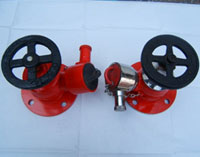Fire Protection Barriers
Fire protection barriers can increase the safety of a home or building. They can also ensure that the structure complies with all local fire codes.
What are the Main Feature of Fire Protection Barriers?
A fire protection barrier is much more flexible than other types of insulation. This barrier features a glass fabric that is treated to withstand high temperatures. This fabric is on both sides of the barrier. Fire protection barriers also feature a gray and silver pigmented flame retardant polymer. Both of these features combine to create a passive fire protection system. This system is enhanced by the presence of vermiculite and mineral salts in the barrier.
The passive fire protection system of this type of barrier provides a standard 75 minute fire-resistance rating. It's also possible to upgrade to a barrier that can withstand a fire for a full two hours. These barriers are also coated with PU to suppress any dust that can act as irritant. Fire protection barriers are fully resistant to tears and abrasions. While this type of barrier offers very effective fire protection, it's still a breathable material. The material is also waterproof.
How Do You Install a Fire Protection Barrier?
Fire protection barriers can be installed in almost all structures. Applications of this type of barrier include pitched roofs, loft conversions, suspended ceilings, partition walls, scaffold stairwells and wood framed buildings. When a fire protection barrier is installed, Class O glass tape can be used to completely seal all joints. This will ensure that the barrier is able to fully protect against the spread of fire and smoke. While standard fire protection barriers do an excellent job of providing protection to a home or commercial building, some property owners may be interested in complementing this type of barrier with a fire protection membrane. The benefit of using both options in conjunction with each other is that fire protection membranes can be used as awnings, canopies or curtains.
This type of membrane is coated with silicone. That makes it very effective and flexible. Not only can this type of membrane be used inside of a structure, but because it's treated to resist wicking, it can be used outside as well. Choosing this type of membrane will prevent any issues with molten drips or toxic fumes. An added benefit of a fire protection membrane is its ability to block potentially harmful types of light. While UV-A light can improve people's moods and keep their sleep patterns regulated, short wave UV-B light can be damaging to skin. A fire protection membrane will allow the former while blocking the latter.
How Much Do Fire Protection Barriers Cost?
Fire protection barriers are sold by the roll. Each roll of fire protection barrier is 50m in length. The price of each roll depends on its width:
- 1m rolls = $761
- 1.3m rolls = $982
- 1.5m rolls = $1,134
- 3m rolls = $2,169

